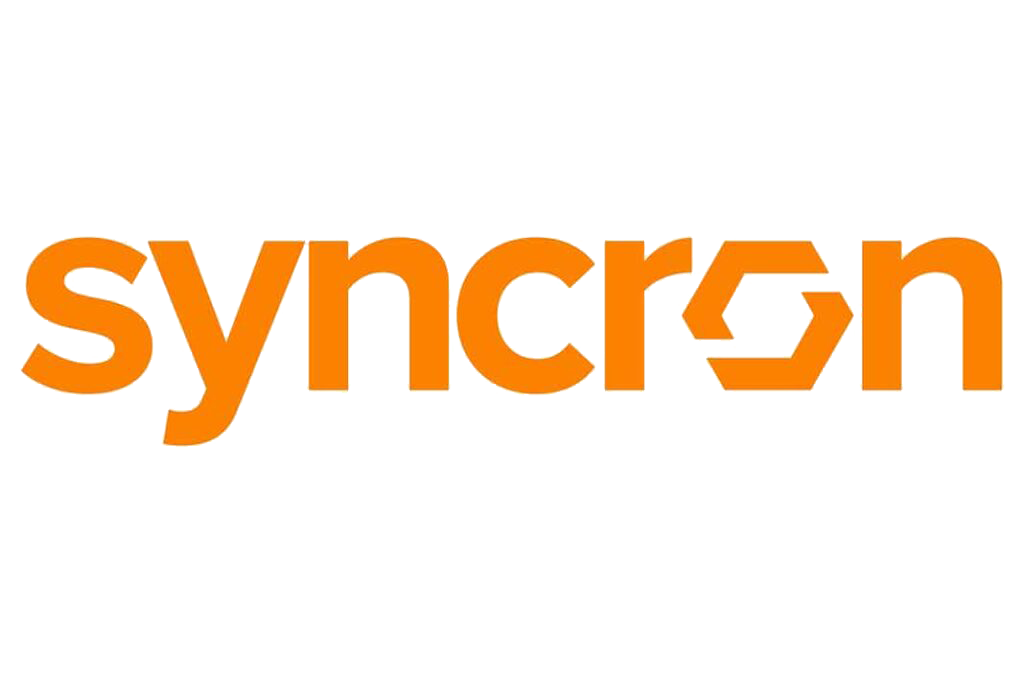Hi – welcome to your dedicated campaign page for 2023!
This page is your central hub for all of your activity with Field Service News. On this page, you will find the following:
Press Release Submission
- Submit your latest press releases using the button below.
- Please note that .docx format is preferable when submitting press releases.
- We will publish your press release within 2 working days of receipt
- Your press release will be included in the next available newsletter, which runs weekly on Mondays.
- If you wish to include an embargo deadline on your press release, include this in the notes section of the form
Your Published NEWS
You currently have the remaining branding tools to use
Inventory:
- 4 x Newsletter Sponsorships
- 4 x Newsletter banners
- 2 x web banner campaigns
- Tailored side bar
Digital ad specifications:
- Newsletter banners – 728×90
- Newsletter sponsor text – max 150 words
- Web banners – 300×250 & 300x 600
- Side bar requirements – logo
Features available for commentary
- You can comment on all the features listed below.
- There are several questions related to each feature
- You may submit appx 300 words per feature, responding to between one and three of the questions
- Please identify the feature you are supplying content for and the questions you are responding to in your document
- Please either submit your responses in word doc format
Deadline for submission: 20.01.25
Synopsis
This article explores strategies for driving revenue growth in the aftermarket by fostering stronger customer loyalty. It delves into the importance of personalized service offerings, proactive communication, and seamless support experiences. The article will highlight best practices for leveraging loyalty programs, data analytics, and digital platforms to enhance customer relationships and maximize lifetime value. Examples of successful implementations will be included to illustrate the impact of loyalty-focused strategies.
Contributor Questions
- What strategies has your organization implemented to enhance customer loyalty in the aftermarket?
- Can you share an example where a loyalty program or initiative significantly improved customer retention or revenue?
- How do you leverage data analytics to understand and address customer needs in the aftermarket?
- What role do digital platforms and tools play in strengthening your aftermarket customer relationships?
- What challenges have you faced in implementing loyalty-focused strategies, and how did you overcome them?
- How do you balance revenue growth with providing exceptional customer value in your aftermarket services?
Deadline for submissions: 21.01.25
Synopsis
This article examines the shifting landscape of field service management as rising customer expectations drive the need for evolution. It will explore how demands for faster response times, personalized interactions, and proactive service delivery are reshaping traditional approaches.
The piece will highlight strategies for meeting these expectations, such as adopting advanced technologies, empowering frontline workers, and implementing customer-centric practices. Real-world examples will demonstrate how organizations have successfully adapted to these changes to achieve greater customer satisfaction and loyalty.
Contributor Questions
- How have rising customer expectations influenced your field service strategies?
- Can you share an example where adapting to customer demands significantly improved service outcomes?
- What technologies or tools have been most effective in helping you meet evolving customer expectations?
- How do you train and empower your field service teams to deliver exceptional customer experiences?
- What challenges have you faced in aligning your operations with heightened customer demands, and how have you addressed them?
- What future trends in customer expectations do you anticipate, and how are you preparing to meet them?
Deadline for submission: 22.01.25
Synopsis
This article explores the power of dynamic pricing in B2B manufacturing, focusing on how it enables companies to respond to market fluctuations, customer demand, and competitive pressures in real time. It will discuss the role of AI, machine learning, and big data in implementing dynamic pricing models, as well as the benefits of increased profitability and market agility.
The article will also highlight the challenges of adoption and strategies to ensure seamless implementation, featuring examples of manufacturers successfully leveraging dynamic pricing.
Contributor Questions
- How has your organization adopted dynamic pricing, and what results have you achieved?
- Can you share an example where dynamic pricing helped you respond effectively to market changes or customer demands?
- What role do AI and big data play in your dynamic pricing strategy, and how do you ensure data accuracy?
- What challenges did you face in implementing dynamic pricing models, and how did you overcome them?
- How do you balance pricing flexibility with maintaining customer trust and long-term relationships?
- What future advancements in dynamic pricing technologies do you anticipate, and how are you preparing to integrate them?
Deadline for submission: 23.01.25
Synopsis
This article examines the critical role of personalization in B2B eCommerce as customer expectations for tailored experiences continue to rise. It explores how manufacturers can leverage data analytics, AI, and customer insights to deliver customized recommendations, content, and services.
The piece will highlight the benefits of personalization, such as improved customer satisfaction and loyalty, while addressing the challenges of implementation and balancing personalization with data privacy compliance. Case studies will illustrate the transformative impact of effective personalization strategies.
Contributor Questions
- How has your organization integrated personalization into your B2B eCommerce strategy, and what results have you seen?
- Can you provide an example where personalization significantly improved customer engagement or sales?
- What challenges have you faced in implementing personalization at scale, and how did you address them?
- How do you balance delivering personalized experiences with ensuring compliance with data privacy regulations?
- What tools or technologies have been most effective in driving personalization in your eCommerce platform?
- How do you see personalization evolving in B2B eCommerce over the next few years, and how are you preparing for these changes?
- Publishing Date: Monday, 03 February 2025
- Submission Deadline: Monday, 27 January 2025
- Primary Area of Focus: Field Service Management
- Secondary Area of Focus: Artificial Intelligence and Workforce Optimization
- Synopsis:
This article examines how AI-driven resource allocation is transforming field service operations. It explores how advanced algorithms can optimize technician scheduling by considering factors such as skills, proximity, and task priority. The piece highlights the operational efficiencies and customer satisfaction improvements enabled by this shift. - Contributor Questions:
- What emerging trends are influencing how field services manage technician allocation?
- In what ways can AI contribute to greater agility and adaptability in resource management?
- How can organizations ensure a seamless integration of AI-driven tools into their existing workflows?
- What are the most important considerations for balancing efficiency and customer satisfaction in field services?
- How might advancements in predictive technologies shape the future of workforce management?
- What role does data quality play in ensuring the success of AI-based allocation systems?
- Publishing Date: Tuesday, 04 February 2025
- Submission Deadline: Tuesday, 28 January 2025
- Primary Area of Focus: Spare Parts Management
- Secondary Area of Focus: Supply Chain Transparency and Blockchain Technology
- Synopsis:
This article discusses how blockchain technology enhances real-time spare parts tracking. It explores how distributed ledger systems improve supply chain visibility, streamline operations, and mitigate risks such as counterfeiting and inventory discrepancies. The piece emphasizes the critical role of trust and transparency in modern supply chain ecosystems. - Contributor Questions:
- How is blockchain reshaping supply chain transparency across industries?
- What specific opportunities does distributed ledger technology offer for enhancing trust in spare parts management?
- How can companies balance technological complexity with operational simplicity when adopting blockchain?
- What role does supply chain transparency play in achieving greater sustainability goals?
- In what ways might real-time tracking reduce inefficiencies and delays in spare parts logistics?
- How could blockchain integration evolve to address future challenges in supply chain management?
- Publishing Date: Wednesday, 05 February 2025
- Submission Deadline: Wednesday, 29 January 2025
- Primary Area of Focus: Pricing in Manufacturing
- Secondary Area of Focus: Sustainability and Regulatory Compliance
- Synopsis:
This article explores how carbon pricing can be integrated into manufacturing cost structures to align with sustainability goals. It discusses strategies for balancing environmental responsibility with profitability, while addressing the complexities of incorporating carbon pricing into financial planning. The piece also highlights the importance of aligning pricing strategies with evolving regulatory frameworks. - Contributor Questions:
- What are the most critical considerations for integrating carbon pricing into cost structures?
- How might sustainability goals influence the evolution of pricing models in manufacturing?
- What innovative approaches are helping businesses align profitability with environmental responsibility?
- How can manufacturers navigate the complexities of carbon pricing within regulatory frameworks?
- In what ways does carbon pricing impact decision-making at both operational and strategic levels?
- What future trends could shape how manufacturers approach carbon pricing?
- Publishing Date: Thursday, 06 February 2025
- Submission Deadline: Thursday, 30 January 2025
- Primary Area of Focus: E-Commerce in Manufacturing
- Secondary Area of Focus: Customer Experience and Product Configuration
- Synopsis:
This article examines how manufacturers can leverage customizable e-commerce platforms to cater to the unique needs of B2B customers. It discusses the role of digital tools in creating tailored buying experiences, enhancing customer satisfaction, and increasing order accuracy. The piece emphasizes the operational and strategic benefits of offering product configuration options online. - Contributor Questions:
- What trends are driving demand for customization in B2B e-commerce?
- How can manufacturers ensure that customization improves both operational efficiency and customer satisfaction?
- What role do emerging technologies play in enabling real-time product configuration?
- How does offering tailored online experiences impact long-term customer loyalty?
- What challenges arise in scaling customization, and how might these be overcome?
- In what ways can businesses future-proof their e-commerce platforms to support advanced customization?
Data-Driven Loyalty: Building Aftermarket Revenue with Predictive Customer Insights
- Publishing Date: Friday, 07 February 2025
- Submission Deadline: Friday, 31 January 2025
- Primary Area of Focus: Aftermarket Management
- Secondary Area of Focus: Predictive Analytics and Customer Retention
- Synopsis:
This article explores how predictive analytics enables aftermarket businesses to anticipate customer needs and build loyalty. It discusses how data insights can be used to refine service offerings, create targeted campaigns, and drive long-term revenue growth. The piece emphasizes the strategic importance of aligning predictive tools with customer expectations. - Contributor Questions:
- What are the most effective ways to harness predictive analytics for customer engagement in aftermarket services?
- How can businesses use data insights to anticipate and address changing customer needs?
- What key factors should be considered when aligning predictive tools with customer experience goals?
- How does predictive analytics influence the development of loyalty-focused aftermarket strategies?
- What role does advanced data modeling play in optimizing service offerings for aftermarket customers?
- How might advancements in predictive technologies shape the future of aftermarket management?
IoT in Field Services: Real-Time Diagnostics for Faster Response and Reduced Downtime
- Publishing Date: Monday, 10 February 2025
- Submission Deadline: Monday, 03 February 2025
- Primary Area of Focus: Field Service Management
- Secondary Area of Focus: Internet of Things (IoT) and Predictive Diagnostics
- Synopsis:
This article explores how IoT is enabling real-time diagnostics in field service operations. It examines how connected devices allow for proactive monitoring of equipment, minimizing downtime and improving response times. The piece discusses the broader impact of IoT on operational efficiency and service delivery. - Contributor Questions:
- How is IoT reshaping the way field service teams monitor and diagnose equipment?
- What strategies can enhance the integration of IoT solutions into existing workflows?
- In what ways does real-time data improve service responsiveness and customer satisfaction?
- What role does predictive maintenance play in reducing operational disruptions?
- How can companies address security challenges when deploying IoT solutions?
- What advancements in IoT technology might further optimize field service operations?
- Publishing Date: Tuesday, 11 February 2025
- Submission Deadline: Tuesday, 04 February 2025
- Primary Area of Focus: Spare Parts Management
- Secondary Area of Focus: Supply Chain Resilience and Risk Mitigation
- Synopsis:
This article discusses the importance of resilience in spare parts supply chains amidst global disruptions. It examines strategies for creating flexible and robust supply chains that can adapt to challenges such as material shortages, logistical delays, and geopolitical events. The piece emphasizes the value of proactive risk management in maintaining operational continuity. - Contributor Questions:
- What are the key factors to consider when building resilient supply chains for spare parts?
- How can manufacturers proactively identify and address potential supply chain risks?
- In what ways can digital tools enhance supply chain visibility and flexibility?
- What lessons can be learned from recent disruptions to improve future resilience?
- How does effective collaboration with suppliers contribute to a disruption-proof supply chain?
- What emerging trends are influencing the evolution of supply chain resilience?
- Publishing Date: Wednesday, 12 February 2025
- Submission Deadline: Wednesday, 05 February 2025
- Primary Area of Focus: Pricing in Manufacturing
- Secondary Area of Focus: Behavioral Economics and Customer Psychology
- Synopsis:
This article examines how behavioral pricing models can influence B2B purchasing decisions. It explores how psychological principles such as perceived value, anchoring, and loss aversion can be applied to create more effective pricing strategies. The piece highlights the importance of understanding buyer behavior in shaping pricing approaches. - Contributor Questions:
- How can manufacturers leverage behavioral principles to refine their pricing strategies?
- What role does perceived value play in influencing B2B purchasing decisions?
- How can pricing models be adjusted to address the psychological factors that drive customer loyalty?
- In what ways can data analytics uncover patterns in buyer behavior?
- How do you balance behavioral pricing with the need for transparency and trust?
- What innovations are shaping the application of behavioral economics in B2B pricing?
- Publishing Date: Thursday, 13 February 2025
- Submission Deadline: Thursday, 06 February 2025
- Primary Area of Focus: E-Commerce in Manufacturing
- Secondary Area of Focus: Artificial Intelligence and Logistics Optimization
- Synopsis:
This article explores how AI is transforming last-mile delivery processes in manufacturing e-commerce. It discusses the use of predictive algorithms and route optimization tools to improve delivery efficiency, meet customer expectations, and reduce costs. The piece highlights the strategic value of last-mile innovation in building competitive advantage. - Contributor Questions:
- What key challenges do manufacturers face in optimizing last-mile delivery?
- How does AI enhance efficiency and decision-making in last-mile logistics?
- What role does customer data play in shaping delivery strategies?
- How can manufacturers balance cost-effectiveness with delivery speed in e-commerce?
- What tools or platforms are enabling advancements in last-mile logistics?
- How might future innovations reshape last-mile delivery in manufacturing?
- Publishing Date: Friday, 14 February 2025
- Submission Deadline: Friday, 07 February 2025
- Primary Area of Focus: Aftermarket Management
- Secondary Area of Focus: Proactive Monitoring and Customer Engagement
- Synopsis:
This article discusses how real-time insights are transforming aftermarket operations by enabling proactive monitoring. It explores how businesses can use real-time data to identify potential issues before they occur, improving customer satisfaction and reducing service disruptions. The piece emphasizes the strategic benefits of adopting a proactive approach to customer engagement. - Contributor Questions:
- How can real-time data improve decision-making in aftermarket operations?
- What strategies help businesses shift from reactive to proactive customer engagement?
- How does proactive monitoring enhance customer satisfaction and loyalty?
- In what ways can businesses leverage real-time insights to optimize service delivery?
- What are the key challenges in implementing real-time monitoring systems, and how can they be addressed?
- What trends are shaping the future of proactive aftermarket management?
- Publishing Date: Monday, 17 February 2025
- Submission Deadline: Monday, 10 February 2025
- Primary Area of Focus: Field Service Management
- Secondary Area of Focus: Customer-Centric Strategies and Scalability
- Synopsis:
This article explores how personalization is revolutionizing field service operations. It examines how tailoring services to individual customer needs can enhance satisfaction and loyalty, while maintaining scalability. The piece emphasizes the importance of balancing efficiency with a customer-first approach. - Contributor Questions:
- What factors should organizations consider when implementing personalized field services?
- How does personalization impact operational efficiency in large-scale service operations?
- In what ways can digital tools support the delivery of tailored field services?
- How can businesses measure the success of personalization strategies?
- What role does customer feedback play in refining personalized services?
- How might personalization evolve with advancements in data analytics and AI?
- Publishing Date: Tuesday, 18 February 2025
- Submission Deadline: Tuesday, 11 February 2025
- Primary Area of Focus: Spare Parts Management
- Secondary Area of Focus: Circular Economy and Cost Optimization
- Synopsis:
This article discusses the economic benefits of remanufacturing in spare parts management. It explores how repurposing and refurbishing used parts can reduce costs, extend product lifecycles, and support sustainability goals. The piece highlights remanufacturing as a key strategy for improving resource efficiency. - Contributor Questions:
- What key steps are involved in creating a successful remanufacturing program?
- How does remanufacturing contribute to both cost savings and sustainability goals?
- What operational challenges arise in remanufacturing, and how can they be mitigated?
- How does remanufacturing impact the perception of quality and reliability among customers?
- What tools or processes can enhance the efficiency of remanufacturing workflows?
- How might future trends in manufacturing influence the role of remanufacturing?
- Publishing Date: Wednesday, 19 February 2025
- Submission Deadline: Wednesday, 12 February 2025
- Primary Area of Focus: Pricing in Manufacturing
- Secondary Area of Focus: Data-Driven Strategies and Market Responsiveness
- Synopsis:
This article examines how real-time data is enabling manufacturers to adopt agile pricing strategies. It discusses how leveraging dynamic insights can help businesses respond quickly to market changes, optimize profitability, and maintain a competitive edge. The piece emphasizes the strategic importance of agility in pricing models. - Contributor Questions:
- How can manufacturers integrate real-time data into their pricing strategies effectively?
- What are the primary benefits of adopting agile pricing models in competitive markets?
- In what ways can businesses ensure their pricing models remain responsive to market fluctuations?
- How does agile pricing contribute to long-term customer retention and profitability?
- What technologies or tools support the implementation of dynamic pricing strategies?
- How might advancements in AI and data analytics shape the future of agile pricing?
- Publishing Date: Thursday, 20 February 2025
- Submission Deadline: Thursday, 13 February 2025
- Primary Area of Focus: E-Commerce in Manufacturing
- Secondary Area of Focus: Global Logistics and Trade Regulations
- Synopsis:
This article explores the challenges and opportunities of scaling e-commerce operations across international markets. It examines how businesses can navigate trade regulations, logistical complexities, and cultural differences to build successful global e-commerce strategies. The piece highlights the strategic value of cross-border expansion. - Contributor Questions:
- What key factors should businesses consider when scaling e-commerce operations internationally?
- How can companies address logistical challenges in cross-border trade?
- What role do digital platforms play in simplifying global e-commerce operations?
- How can businesses adapt to varying cultural and regulatory requirements in different regions?
- What strategies help mitigate risks associated with global supply chains?
- How might emerging technologies transform cross-border e-commerce in the coming years?
- Publishing Date: Friday, 21 February 2025
- Submission Deadline: Friday, 14 February 2025
- Primary Area of Focus: Aftermarket Management
- Secondary Area of Focus: Microservices Architecture and Scalability
- Synopsis:
This article discusses how microservices architecture is transforming aftermarket platforms by enabling modular and scalable solutions. It explores the benefits of breaking down monolithic systems into smaller, independently deployable services, improving flexibility and responsiveness. The piece emphasizes the importance of scalability in modern aftermarket strategies. - Contributor Questions:
- What are the key benefits of adopting microservices architecture in aftermarket platforms?
- How does modularity enhance flexibility and scalability in service delivery?
- What challenges should businesses anticipate when transitioning from monolithic to microservices platforms?
- How can companies ensure seamless integration between microservices and existing systems?
- In what ways does microservices architecture improve customer experience and engagement?
- What future developments might influence the adoption of microservices in the aftermarket sector?
- Publishing Date: Monday, 24 February 2025
- Submission Deadline: Monday, 17 February 2025
- Primary Area of Focus: Field Service Management
- Secondary Area of Focus: Sustainability and Fleet Optimization
- Synopsis:
This article explores strategies for reducing the environmental impact of field service operations through green fleet management. It examines how businesses can optimize vehicle usage, adopt sustainable fuels, and use data-driven routing tools to minimize emissions. The piece highlights the operational and environmental benefits of sustainable fleet practices. - Contributor Questions:
- What steps can organizations take to implement greener fleet management practices?
- How can data and technology improve fleet efficiency while reducing emissions?
- What challenges arise in transitioning to sustainable vehicles, and how can they be addressed?
- How does green fleet management contribute to broader sustainability goals?
- What role do government incentives and policies play in promoting sustainable fleets?
- How might advancements in electric and autonomous vehicles impact fleet management strategies?
- Publishing Date: Tuesday, 25 February 2025
- Submission Deadline: Tuesday, 18 February 2025
- Primary Area of Focus: Spare Parts Management
- Secondary Area of Focus: Digital Twin Technology and Inventory Optimization
- Synopsis:
This article examines how digital twin technology is transforming spare parts management by creating virtual replicas of physical systems. It explores how digital twins can enhance inventory forecasting, improve supply chain efficiency, and reduce waste. The piece emphasizes the potential of this technology to revolutionize spare parts operations. - Contributor Questions:
- How can digital twin technology improve inventory accuracy and forecasting?
- What are the main barriers to implementing digital twins in spare parts management?
- In what ways do digital twins enhance collaboration between teams and suppliers?
- How can businesses ensure the accuracy and reliability of digital twin models?
- What benefits do digital twins offer for reducing inefficiencies in spare parts supply chains?
- How might advancements in digital twin technology further transform supply chain operations?
- Publishing Date: Wednesday, 26 February 2025
- Submission Deadline: Wednesday, 19 February 2025
- Primary Area of Focus: Pricing in Manufacturing
- Secondary Area of Focus: Data Analytics and Customer Retention
- Synopsis:
This article explores how manufacturers can balance price elasticity with customer loyalty using data-driven strategies. It examines how analyzing customer behavior and market dynamics can help businesses refine their pricing models to maximize profitability without sacrificing long-term relationships. - Contributor Questions:
- How can manufacturers leverage data analytics to better understand price elasticity?
- What strategies help businesses balance competitive pricing with customer loyalty?
- In what ways can customer feedback inform pricing decisions?
- How does price transparency impact trust and loyalty in the manufacturing sector?
- What technologies are most effective for monitoring and responding to price sensitivity?
- How might data-driven insights shape the future of pricing in manufacturing?
- Publishing Date: Thursday, 27 February 2025
- Submission Deadline: Thursday, 20 February 2025
- Primary Area of Focus: E-Commerce in Manufacturing
- Secondary Area of Focus: Reverse Logistics and Operational Efficiency
- Synopsis:
This article examines how seamless reverse logistics can enhance efficiency and customer satisfaction in e-commerce. It discusses strategies for streamlining returns processes, reducing costs, and integrating sustainable practices. The piece highlights the importance of a well-designed returns strategy in building trust with customers. - Contributor Questions:
- What are the key challenges in implementing efficient reverse logistics for e-commerce?
- How can businesses optimize their returns processes to reduce costs and improve speed?
- In what ways can reverse logistics strategies contribute to sustainability goals?
- How does effective management of returns impact customer satisfaction and retention?
- What technologies or platforms are essential for enabling seamless reverse logistics?
- How might future trends in e-commerce influence the evolution of reverse logistics?
- Publishing Date: Friday, 28 February 2025
- Submission Deadline: Friday, 21 February 2025
- Primary Area of Focus: Aftermarket Management
- Secondary Area of Focus: Sustainability and Profitability
- Synopsis:
This article explores how aftermarket businesses can adopt sustainable practices while maintaining profitability. It examines strategies such as part refurbishment, recycling, and carbon-neutral operations, highlighting the dual benefits of environmental responsibility and financial performance. - Contributor Questions:
- What practical steps can businesses take to make their aftermarket operations more sustainable?
- How does sustainability influence customer perceptions and loyalty in the aftermarket sector?
- In what ways can refurbishment and recycling improve operational efficiency?
- What role do partnerships play in achieving sustainability goals in aftermarket operations?
- How can businesses balance the costs of sustainability initiatives with profitability?
- What trends are shaping the integration of sustainability into aftermarket strategies?
- Publishing Date: Monday, 03 March 2025
- Submission Deadline: Monday, 26 February 2025
- Primary Area of Focus: Field Service Management
- Secondary Area of Focus: Augmented Reality and Workforce Development
- Synopsis:
This article explores the growing importance of preparing technicians for augmented reality (AR) tools in field service operations. It discusses the key skills required to integrate AR into workflows effectively and examines strategies for upskilling teams to adapt to this emerging technology. The piece highlights the benefits of AR in enhancing technician productivity and service quality. - Contributor Questions:
- What emerging skills are critical for technicians to succeed in AR-integrated field services?
- How can organizations design training programs that align with the adoption of AR tools?
- What challenges arise when incorporating AR into field service workflows, and how can they be addressed?
- How might AR technology impact the role and responsibilities of field technicians in the future?
- What are the broader implications of AR adoption on service delivery and customer experience?
- How do you see the intersection of AR and AI shaping field service operations?
- Publishing Date: Tuesday, 04 March 2025
- Submission Deadline: Tuesday, 27 February 2025
- Primary Area of Focus: Spare Parts Management
- Secondary Area of Focus: Circular Economy and Revenue Optimization
- Synopsis:
This article examines how organizations can turn surplus and scrap materials into revenue streams through innovative spare parts management strategies. It discusses the potential of reusing, recycling, and reselling excess inventory to reduce waste, cut costs, and contribute to sustainability goals. The piece highlights the financial and environmental benefits of adopting a circular approach to spare parts management. - Contributor Questions:
- What are the most effective strategies for monetizing surplus and scrap in spare parts management?
- How can organizations balance profitability with sustainability when repurposing waste materials?
- What operational changes are required to implement circular economy principles in spare parts logistics?
- How can digital tools support the identification and valuation of surplus inventory?
- What challenges should companies anticipate when transitioning to a waste-to-revenue model?
- How might emerging technologies enhance the efficiency and scalability of surplus monetization efforts?
- Publishing Date: Wednesday, 05 March 2025
- Submission Deadline: Wednesday, 27 February 2025
- Primary Area of Focus: Pricing in Manufacturing
- Secondary Area of Focus: Recurring Revenue Models and Customer Engagement
- Synopsis:
This article explores how subscription-based pricing is transforming manufacturing, turning products into ongoing services. It examines the strategic and financial benefits of recurring revenue models, focusing on their potential to deepen customer relationships and ensure predictable income streams. The piece emphasizes the importance of aligning pricing strategies with customer needs and industry trends. - Contributor Questions:
- What are the key considerations for implementing subscription-based pricing in manufacturing?
- How does this model enhance customer engagement and loyalty?
- What operational adjustments are required to transition from product sales to subscription services?
- In what ways does subscription-based pricing mitigate revenue volatility?
- How can digital tools support the rollout and management of recurring revenue models?
- What role does customer feedback play in shaping subscription offerings?
- Publishing Date: Thursday, 06 March 2025
- Submission Deadline: Thursday, 28 February 2025
- Primary Area of Focus: E-Commerce in Manufacturing
- Secondary Area of Focus: Emerging Technologies and Customer Experience
- Synopsis:
This article examines the rise of voice commerce as a transformative force in B2B manufacturing. It discusses how voice-enabled technologies can streamline procurement, improve user experiences, and enhance accessibility. The piece highlights the potential of voice commerce to simplify complex purchasing processes in manufacturing. - Contributor Questions:
- What trends are driving the adoption of voice commerce in manufacturing?
- How does voice technology enhance the efficiency of B2B procurement?
- What challenges might businesses face when integrating voice commerce into their sales channels?
- How can voice-enabled platforms improve accessibility for global customers?
- What security considerations should companies address when implementing voice commerce?
- How might advancements in natural language processing shape the future of voice commerce?
- Publishing Date: Friday, 07 March 2025
- Submission Deadline: Friday, 29 February 2025
- Primary Area of Focus: Aftermarket Management
- Secondary Area of Focus: Customer Support and Emerging Technologies
- Synopsis:
This article explores how augmented reality is revolutionizing aftermarket services by enhancing customer support and troubleshooting. It discusses how AR tools enable manufacturers to deliver immersive experiences, improve problem resolution, and strengthen customer relationships. The piece emphasizes AR’s role in building trust and delivering value beyond initial sales. - Contributor Questions:
- How is augmented reality transforming customer support in the aftermarket sector?
- What steps should businesses take to integrate AR tools into their support strategies?
- In what ways does AR enhance troubleshooting and problem resolution for customers?
- How can AR applications improve customer engagement and satisfaction?
- What challenges should organizations prepare for when adopting AR for aftermarket services?
- What advancements in AR technology might further impact aftermarket management?
- Publishing Date: Monday, 10 March 2025
- Submission Deadline: Monday, 03 March 2025
- Primary Area of Focus: Field Service Management
- Secondary Area of Focus: Robotics and Autonomous Technologies
- Synopsis:
This article delves into how autonomous technologies are reshaping field service operations. It explores the potential of self-driving vehicles, drones, and robotics to improve efficiency, reduce costs, and enhance service quality. The piece discusses the strategic implications of embracing autonomy in field services. - Contributor Questions:
- What applications of autonomous technologies are most impactful in field services?
- How can businesses prepare their operations for a shift to autonomous service teams?
- What are the main challenges in deploying autonomous vehicles and drones for field services?
- How does autonomy influence workforce dynamics and skill requirements?
- What regulatory considerations should organizations keep in mind when adopting autonomous technologies?
- How might future innovations in robotics shape the evolution of field service operations?
- Publishing Date: Tuesday, 11 March 2025
- Submission Deadline: Tuesday, 04 March 2025
- Primary Area of Focus: Spare Parts Management
- Secondary Area of Focus: Artificial Intelligence and Inventory Optimization
- Synopsis:
This article examines how artificial intelligence is transforming spare parts categorization, simplifying inventory management processes. It discusses how AI can streamline data classification, reduce human errors, and improve operational efficiency. The piece emphasizes the potential of AI to optimize inventory systems and drive smarter decision-making. - Contributor Questions:
- What are the key advantages of using AI for spare parts categorization?
- How can businesses integrate AI into their existing inventory management workflows?
- What challenges do organizations face when adopting AI-driven categorization systems?
- How does accurate categorization impact supply chain efficiency and cost savings?
- What role does machine learning play in refining spare parts categorization over time?
- How might advancements in AI technology further transform inventory management?
- Publishing Date: Wednesday, 12 March 2025
- Submission Deadline: Wednesday, 05 March 2025
- Primary Area of Focus: Pricing in Manufacturing
- Secondary Area of Focus: Localization and Cost Optimization
- Synopsis:
This article explores how nearshoring is reshaping pricing strategies for manufacturers. It discusses the financial and logistical impacts of relocating production closer to key markets, including changes in transportation costs, labor dynamics, and market responsiveness. The piece highlights the need for adaptable pricing models to align with nearshoring trends. - Contributor Questions:
- What pricing considerations should manufacturers account for when adopting nearshoring strategies?
- How does nearshoring influence cost structures in manufacturing operations?
- In what ways can localized production improve pricing agility and competitiveness?
- What challenges might arise when aligning pricing strategies with nearshoring initiatives?
- How can manufacturers effectively communicate pricing changes to stakeholders?
- What future trends in nearshoring are likely to shape manufacturing pricing models?
- Publishing Date: Thursday, 13 March 2025
- Submission Deadline: Thursday, 06 March 2025
- Primary Area of Focus: E-Commerce in Manufacturing
- Secondary Area of Focus: Sales Integration and Customer Experience
- Synopsis:
This article examines how omnichannel strategies are bridging the gap between digital and physical sales in B2B manufacturing. It explores how manufacturers can integrate online platforms with traditional sales channels to deliver seamless customer experiences and drive growth. The piece emphasizes the importance of aligning digital and physical operations to meet evolving customer expectations. - Contributor Questions:
- What are the core elements of a successful omnichannel strategy in manufacturing?
- How can manufacturers effectively integrate digital and physical sales channels?
- In what ways does omnichannel alignment enhance the B2B customer journey?
- What challenges should companies prepare for when implementing omnichannel strategies?
- How can data analytics improve decision-making across digital and physical sales channels?
- What role do emerging technologies play in enabling omnichannel solutions for manufacturers?
- Publishing Date: Friday, 14 March 2025
- Submission Deadline: Friday, 07 March 2025
- Primary Area of Focus: Aftermarket Management
- Secondary Area of Focus: Predictive Analytics and Customer Engagement
- Synopsis:
This article explores how predictive analytics is revolutionizing aftermarket services by enabling businesses to anticipate customer needs. It discusses how data insights can improve service offerings, enhance customer satisfaction, and optimize resource allocation. The piece highlights the strategic benefits of leveraging predictive tools for proactive aftermarket management. - Contributor Questions:
- How can predictive analytics help businesses anticipate and address customer needs?
- What are the key considerations for implementing predictive tools in aftermarket operations?
- In what ways can data-driven insights improve customer engagement and satisfaction?
- How does predictive analytics support better resource planning and allocation?
- What challenges might organizations face when adopting predictive technologies, and how can they overcome them?
- What trends are shaping the future of predictive analytics in the aftermarket sector?
- Publishing Date: Monday, 17 March 2025
- Submission Deadline: Monday, 10 March 2025
- Primary Area of Focus: Field Service Management
- Secondary Area of Focus: Crisis Management and Operational Resilience
- Synopsis:
This article discusses how field service teams can maintain continuity during disruptive events such as natural disasters, pandemics, or economic shifts. It explores strategies for ensuring operational resilience, safeguarding employee safety, and sustaining customer trust in challenging times. The piece emphasizes the value of proactive planning and adaptable workflows. - Contributor Questions:
- What strategies can help field service teams prepare for and respond to crises?
- How can businesses maintain operational resilience during disruptive events?
- In what ways can technology support crisis management efforts in field services?
- How does safeguarding employee safety contribute to service continuity?
- What role does customer communication play in managing expectations during crises?
- How can lessons from past disruptions improve future crisis preparedness?
- Publishing Date: Tuesday, 18 March 2025
- Submission Deadline: Tuesday, 11 March 2025
- Primary Area of Focus: Spare Parts Management
- Secondary Area of Focus: Recurring Revenue Models and Customer Retention
- Synopsis:
This article examines the growing adoption of subscription models in spare parts management. It explores how recurring revenue strategies can improve financial predictability, strengthen customer relationships, and streamline inventory management. The piece highlights the strategic benefits of transitioning from transactional sales to subscription services. - Contributor Questions:
- What are the key components of a successful spare parts subscription model?
- How can businesses balance operational efficiency with customer satisfaction in subscription services?
- What challenges arise when transitioning from one-time sales to recurring revenue models?
- How do subscription models contribute to stronger customer retention?
- What tools or platforms support the management of spare parts subscriptions?
- What trends are driving the adoption of subscription-based approaches in manufacturing?
- Publishing Date: Wednesday, 19 March 2025
- Submission Deadline: Wednesday, 12 March 2025
- Primary Area of Focus: Pricing in Manufacturing
- Secondary Area of Focus: Personalization and Data Analytics
- Synopsis:
This article explores how manufacturers can leverage hyper-personalized pricing strategies to meet the unique needs of B2B customers. It discusses the role of data analytics in creating tailored pricing offers, enhancing customer satisfaction, and improving profitability. The piece emphasizes the importance of aligning pricing models with specific customer demands and market conditions. - Contributor Questions:
- What factors should manufacturers consider when implementing hyper-personalized pricing?
- How can data analytics uncover insights to drive effective pricing strategies?
- What challenges arise in aligning pricing offers with diverse customer needs?
- How does personalization in pricing influence customer loyalty and retention?
- What tools or platforms can help manage and scale personalized pricing models?
- How might advancements in AI and machine learning shape the future of pricing personalization?
- Publishing Date: Thursday, 20 March 2025
- Submission Deadline: Thursday, 13 March 2025
- Primary Area of Focus: E-Commerce in Manufacturing
- Secondary Area of Focus: Blockchain and Transaction Automation
- Synopsis:
This article discusses the transformative potential of smart contracts in e-commerce for manufacturing. It examines how blockchain-enabled agreements can streamline transactions, reduce delays, and enhance trust between stakeholders. The piece highlights the efficiency and security benefits of adopting smart contracts for B2B e-commerce operations. - Contributor Questions:
- How do smart contracts improve transparency and trust in manufacturing e-commerce?
- What challenges might businesses face when integrating smart contracts into existing systems?
- In what ways can smart contracts enhance the speed and accuracy of transactions?
- How do blockchain technologies support the scalability of e-commerce platforms?
- What factors should organizations consider when adopting smart contract solutions?
- How might smart contracts influence the evolution of global trade in manufacturing?
- Publishing Date: Friday, 21 March 2025
- Submission Deadline: Friday, 14 March 2025
- Primary Area of Focus: Aftermarket Management
- Secondary Area of Focus: Additive Manufacturing and On-Demand Production
- Synopsis:
This article explores how 3D printing is revolutionizing aftermarket spare parts by enabling on-demand production. It examines the benefits of additive manufacturing for reducing lead times, minimizing inventory costs, and meeting customer needs efficiently. The piece highlights the strategic importance of 3D printing in enhancing flexibility and responsiveness in aftermarket services. - Contributor Questions:
- How can 3D printing improve the availability and accessibility of spare parts?
- What operational adjustments are necessary to integrate additive manufacturing into aftermarket workflows?
- How does on-demand production impact inventory management and cost efficiency?
- What challenges should businesses anticipate when adopting 3D printing for spare parts?
- How does 3D printing technology enhance customer satisfaction in aftermarket services?
- What advancements in additive manufacturing might further transform the aftermarket sector?
- Publishing Date: Monday, 24 March 2025
- Submission Deadline: Monday, 17 March 2025
- Primary Area of Focus: Field Service Management
- Secondary Area of Focus: Employee Engagement and Performance Optimization
- Synopsis:
This article examines how gamification is transforming field service operations by boosting employee engagement and productivity. It explores how incorporating game-like elements into workflows can motivate technicians, enhance performance, and improve overall service outcomes. The piece highlights the potential of gamification to create a more dynamic and rewarding work environment. - Contributor Questions:
- What are the key benefits of applying gamification principles to field service operations?
- How can gamification strategies be aligned with organizational goals?
- What challenges arise in implementing gamification, and how can they be addressed?
- How does gamification influence workforce morale and retention?
- What tools or platforms are most effective for enabling gamification in field services?
- How might advancements in technology shape the evolution of gamification in the workplace?
- Publishing Date: Tuesday, 25 March 2025
- Submission Deadline: Tuesday, 18 March 2025
- Primary Area of Focus: Spare Parts Management
- Secondary Area of Focus: Sustainability and Storage Optimization
- Synopsis:
This article explores how sustainable warehousing practices can optimize spare parts storage while minimizing environmental impact. It discusses strategies such as energy-efficient systems, renewable materials, and waste reduction techniques. The piece emphasizes the role of sustainability in modern warehousing operations. - Contributor Questions:
- What sustainable practices are most effective for optimizing spare parts warehousing?
- How can businesses reduce energy consumption in storage facilities?
- In what ways do eco-friendly materials contribute to greener warehousing operations?
- How does sustainability influence cost efficiency in warehousing?
- What role do emerging technologies play in supporting sustainable warehousing?
- How might future trends shape the integration of sustainability into storage solutions?
- Publishing Date: Wednesday, 26 March 2025
- Submission Deadline: Wednesday, 19 March 2025
- Primary Area of Focus: Pricing in Manufacturing
- Secondary Area of Focus: Supply Chain Efficiency and Risk Management
- Synopsis:
This article examines how pricing models can address the financial impact of delays in just-in-time (JIT) manufacturing. It discusses strategies for balancing flexibility with cost management and minimizing disruptions in supply chains. The piece highlights the importance of data-driven pricing approaches in supporting JIT operations. - Contributor Questions:
- What pricing strategies are most effective for managing risks in JIT manufacturing?
- How can businesses mitigate the financial impact of supply chain delays?
- In what ways can data analytics improve decision-making in JIT pricing models?
- How does flexibility in pricing contribute to the success of JIT operations?
- What challenges arise in aligning pricing models with JIT principles?
- How might future advancements in supply chain technology influence JIT pricing strategies?
- Publishing Date: Thursday, 27 March 2025
- Submission Deadline: Thursday, 20 March 2025
- Primary Area of Focus: E-Commerce in Manufacturing
- Secondary Area of Focus: Customer Engagement and Artificial Intelligence
- Synopsis:
This article explores how chatbots are revolutionizing customer interactions in B2B manufacturing e-commerce. It discusses how AI-driven tools can improve product discovery, streamline customer support, and enhance user experiences. The piece highlights the strategic value of chatbots in building stronger customer relationships. - Contributor Questions:
- What factors should businesses consider when integrating chatbots into e-commerce platforms?
- How do chatbots enhance customer engagement and streamline support processes?
- In what ways can AI-driven chatbots improve the B2B buying experience?
- How can businesses address challenges in scaling chatbot solutions for global markets?
- What role does natural language processing play in the success of chatbot interactions?
- How might future advancements in AI shape the capabilities of chatbots in manufacturing?
- Publishing Date: Friday, 28 March 2025
- Submission Deadline: Friday, 21 March 2025
- Primary Area of Focus: Aftermarket Management
- Secondary Area of Focus: Customer Experience and Retention Strategies
- Synopsis:
This article examines the critical role of customer onboarding in creating long-term relationships in aftermarket services. It discusses strategies for delivering seamless onboarding experiences that set the stage for loyalty and engagement. The piece emphasizes the value of a well-executed onboarding process in driving customer satisfaction. - Contributor Questions:
- What key elements contribute to a successful customer onboarding process in aftermarket services?
- How can businesses ensure a seamless and engaging onboarding experience?
- In what ways does onboarding influence long-term customer retention and loyalty?
- How can digital tools support and streamline the onboarding process?
- What challenges arise in scaling onboarding strategies for diverse customer segments?
- How might advancements in technology shape the future of customer onboarding?
Your Published FEATURES
Sustainability in Spare Parts: Strategy or Strain?
Aftermarket Services: From Firefighting to Futureproofing
Your Current Copperberg+ Campaigns
Video Interview Campaign: Luke Huckerby on Service Revenue Leakage and Service Contract Management
Duration:
- Appx 4 weeks.
- Provisional period to run: mid January
Activity Timeline
- Newsletter (Highlighted Resource)
- Feature #1
- Feature #2
- Feature #3
- Newsletter (Highlighted resource)
- Feature #4
- Feature #5
- Feature #6
English
Showcase player is here
Download of the full interview is here
Embed code below:
<div style=”padding:56.25% 0 0 0;position:relative;”><iframe src=”https://player.vimeo.com/video/1030713235?badge=0&autopause=0&player_id=0&app_id=58479″ frameborder=”0″ allow=”autoplay; fullscreen; picture-in-picture; clipboard-write” style=”position:absolute;top:0;left:0;width:100%;height:100%;” title=”Service Revenue Leakage (and how to avoid it) ft. Luke Huckerby, Syncron”></iframe></div><script src=”https://player.vimeo.com/api/player.js”></script>
English
Preview link is here
Live URL will be here
Video download is here
Embed code is below:
<div style=”padding:56.25% 0 0 0;position:relative;”><iframe src=”https://player.vimeo.com/video/1030716419?badge=0&autopause=0&player_id=0&app_id=58479″ frameborder=”0″ allow=”autoplay; fullscreen; picture-in-picture; clipboard-write” style=”position:absolute;top:0;left:0;width:100%;height:100%;” title=”The real risk of revenue leakage for Original Equipment Manufacturers”></iframe></div><script src=”https://player.vimeo.com/api/player.js”></script>
English
Preview link is here
Live URL will be here
Video download is here
Embed code is below:
<div style=”padding:56.25% 0 0 0;position:relative;”><iframe src=”https://player.vimeo.com/video/1030717041?badge=0&autopause=0&player_id=0&app_id=58479″ frameborder=”0″ allow=”autoplay; fullscreen; picture-in-picture; clipboard-write” style=”position:absolute;top:0;left:0;width:100%;height:100%;” title=”What are the threats lurking in your service P&L?”></iframe></div><script src=”https://player.vimeo.com/api/player.js”></script>
English
Preview link is here
Live URL will be here
Video download is here
Embed code is below:
<div style=”padding:56.25% 0 0 0;position:relative;”><iframe src=”https://player.vimeo.com/video/1030715666?badge=0&autopause=0&player_id=0&app_id=58479″ frameborder=”0″ allow=”autoplay; fullscreen; picture-in-picture; clipboard-write” style=”position:absolute;top:0;left:0;width:100%;height:100%;” title=”Advanced Services & Servitization: Opportunities & Threats”></iframe></div><script src=”https://player.vimeo.com/api/player.js”></script>
English
Preview link is here
Live URL will be here
Video download is here
Embed code is below:
<div style=”padding:56.25% 0 0 0;position:relative;”><iframe src=”https://player.vimeo.com/video/1030716035?badge=0&autopause=0&player_id=0&app_id=58479″ frameborder=”0″ allow=”autoplay; fullscreen; picture-in-picture; clipboard-write” style=”position:absolute;top:0;left:0;width:100%;height:100%;” title=”Why synergising service lifecycle management is essential”></iframe></div><script src=”https://player.vimeo.com/api/player.js”></script>
English
Preview link is here
Live URL will be here
Video download is here
Embed code is below:
<div style=”padding:56.25% 0 0 0;position:relative;”><iframe src=”https://player.vimeo.com/video/1030716849?badge=0&autopause=0&player_id=0&app_id=58479″ frameborder=”0″ allow=”autoplay; fullscreen; picture-in-picture; clipboard-write” style=”position:absolute;top:0;left:0;width:100%;height:100%;” title=”Does critical tech truly offer competitive advantage or is it simply table stakes?”></iframe></div><script src=”https://player.vimeo.com/api/player.js”></script>
English
Preview link is here
Live URL will be here
Video download is here
Embed code is below:
<div style=”padding:56.25% 0 0 0;position:relative;”><iframe src=”https://player.vimeo.com/video/1030712810?badge=0&autopause=0&player_id=0&app_id=58479″ frameborder=”0″ allow=”autoplay; fullscreen; picture-in-picture; clipboard-write” style=”position:absolute;top:0;left:0;width:100%;height:100%;” title=”The impact of Syncron’s new contract pricing solution will be massive”></iframe></div><script src=”https://player.vimeo.com/api/player.js”></script>
English
White Paper Campaign: Service Revenue Leakage: The achilles heel for all OEMs(and how to avoid it)
Duration:
- Appx 4 weeks.
- Provisional period to run: mid January
Activity Timeline
- Newsletter (Highlighted Resource)
- Feature #1
- Feature #2
- Feature #3
- Newsletter (Highlighted resource)
- Feature #4
- Feature #5
- Feature #6
English
English
English
English
English
English
English
English
Copperberg+ Campaigns Currently Available for Sponsorship
This is where you will find the latest Copperberg+ campaigns that are currently available for sponsorship. This section will be updated regularly and the projects will be available to our before they are made available to the wider public.
White Paper: Sustainability, AI & Servitization:
Campaign includes:
- White paper based on community-driven topics,
- Paper authored by senior editorial team and professionally artworked in Copperberg house style
- 2 x email promotion
- Minimum 4 serialized articles
- 2 x Newsletter highlights
- Display advertising across two premium industry websites
- Social media campaign
- GDPR qualified lead generation
- Full global republication rights.
- All the benefits of a highly sophisticated content-based campaign with zero resources are required from you.
Total campaign value: €31.3K
Standard rate: €17K
Member rate: €9.3K
Copperberg+ Academy: Aftermarket & AI: Exploring the real-world impact on the fulfilment chain for OEMs
Campaign includes:
- Exclusive sponsorship of the academy
- A 25-minute presentation will be held between two end-user presentations.
- Presentation to be pre-recorded so it can be edited to the highest professional standard
- Academy Essential Briefing Report
- Live Session & Post-Session Promotions
Live session promotion includes:
- 2 x email promotion
- 2 x Newsletter highlights
- Display advertising across 2 premium industry websites
- Social media campaign including dedicated video adverts
- GDPR qualified lead generation (min 50 leads)
On-demand promotion includes:
- 3 x serialised features from Briefing Report
- 2 x email promotion
- 2 x Newsletter highlights
- Display advertising across 2 premium industry websites
- Extensive social media campaign
- GDPR qualified lead generation (appx 100+ leads)
- Full global republication rights.
Total campaign value: €43.9K
Standard rate: €27K
Member rate: €17.4K



















